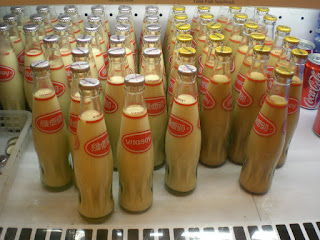Do you know that the weddings in Hong Kong are complex because they
are usually a mix of Chinese and western one and they can cost up to HK$300,000
(around US$38,461)?
The groom’s family would have to pay for the “bride’s price”, which
is usually over HK$10,000 (can be up to HK$100,000). Even though “the more the
merrier”, the bride’s family usually won’t ask for too much (or it will look
like they are selling the daughter). The money can be paid in the form of gold,
jewelry or other valuables.
On the day of the wedding, the groom will have to visit the bride’s
family and “pick up” the bride, which is where the real war begins. The
“sisters” (the female friends and relatives of the bride) will try their best
to stall the groom (in a playful way, of course) and ask for lai see. They will
usually ask for an amount like HK$99,999 (because “9” sounds like “longevity”
and “ever-lasting” in Cantonese, in hope of what the marriage would be), though
it’s up to the groom’s side to decide whether they would pay that amount. And
after all those groom-teasing games/tortures, the groom would finally reach the
bride.
The game’s over, so it’s on to the serious business. The elders from
both families will sit and the couple will serve tea to them. Usually the
elders would give them some lai see or gold jewelry and ask the groom to take
of care of the bride for the rest of his life. And the groom, in return, will
thank the bride’s parents for taking care of their daughter and claim how
meeting the bride is one of the most fortunate things in his life…
Yeah, pretentious stuff…but they love it, so…anyway, the tea
ceremony is done.
And now the couple can choose between a westernized church wedding and
traditional Chinese banquet. People who can afford would go for both, one at
day and the other at night. As for people who can’t…Well, there are even people
who don’t arrange banquet. They simply participate in some religious ceremony
and small meals afterwards. This seems to be the trend over these few years
since the “complete” wedding takes too much time and money.


















